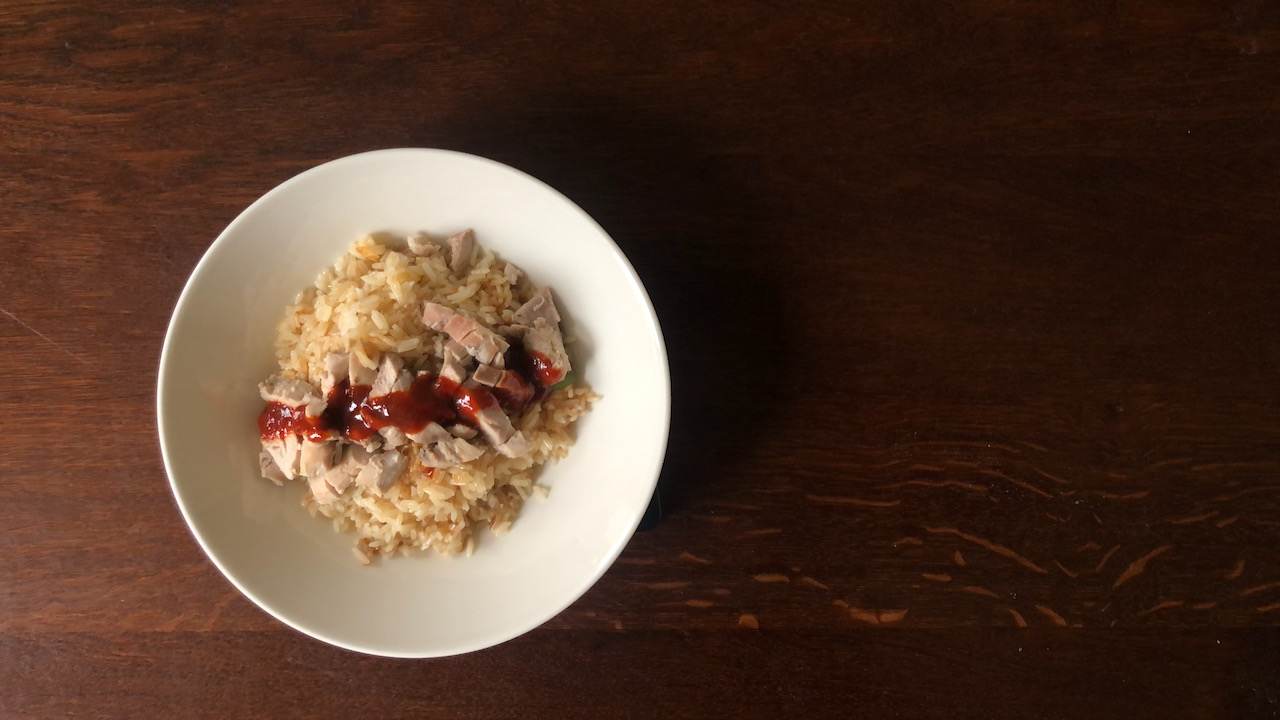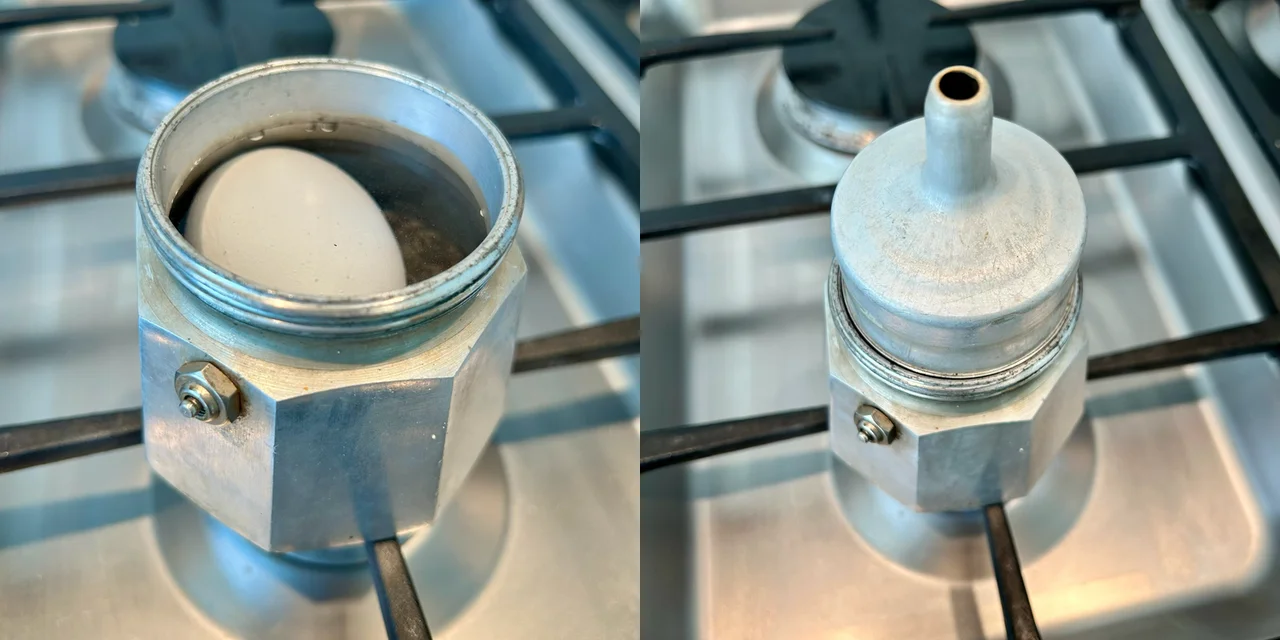Reduce complexity for small tasks
prepare recipes faster when you only need one portion 2025-04-15 #documentation #cooking

Peter Hilton
- Failure & recovery
- Specific techniques
- Substitutions
- Roles
- Small tasks ←
- Quantities
- Variants
If you like cooking and prefer a hot meal for lunch, working from home means doing better than a sandwich. On a lunch break, you can probably only afford about 30 minutes to prepare and cook, at most. Fortunately, some recipes allow for compromises that save time. And while you say compromise, I say optimisation.
Simplified chicken rice
I previously wrote about how simple chicken rice doesn’t take more than half an hour, if you skip or rush enough steps. My lunch recipe also skips the traditional sauces, which take extra time (and I have a bottle of chilli sauce in the fridge). It also settles for simmering the stock for just fifteen minutes.
The result doesn’t taste as good as the traditional recipe, which uses a whole chicken and takes hours. I don’t have that option for lunch, so that doesn’t matter as much as how it compares to the cheese sandwich I’d otherwise eat.
Chicken curry compromise
I also like chicken curry, another slow-cooked recipe. Cooking a curry starts with slowly browning onions for a long time, to develop a rich flavour base. Even when I have time, I only cook the onions for 30–60 minutes, but that still takes too long for lunch.
By sacrificing some richness of flavour, you can cook a single portion of chicken curry in 30 minutes, because a small onion takes less time to dice and cook than several large onions. Meanwhile, marinading the chicken pieces in yoghurt for ten minutes keeps them moist and tender enough. As with the chicken rice, a less tasty version of a tasty dish still tastes good.
The faster hard-boiled egg
When I don’t have time for a hot meal, an egg-mayonnaise sandwich will do for lunch. The hard-boiled egg takes most of the time – ten minutes’ gentle boiling. If you boil a hard-boiled egg faster, you get a soft-boiled egg. But you can boil it sooner if you start earlier.
My smallest saucepan still has room for five or six eggs, which means plenty of water to cover the egg. That much water takes a while to boil, but a ‘saucepan’ just wider than the egg would use need less water to cover the egg, and boil sooner.

I don’t have a tiny saucepan, but I do have a moka pot. I can fit a single egg in the bottom section, cover the egg with water, and put it on the stove with the inverted basket as a lid. I also start with nearly-boiling water from my kitchen’s boiling water tap. With this set-up, the water returns to the boil in about a minute, which reduces the time-to-sandwich by several minutes.
Cookbooks and software documentation
Big Cookbook expects you to cook for 4–6 people, and prepare every meal equally elaborately. But if you only scale recipes by adjusting quantities, you miss out on optimisations that make a single portion faster. Failing to acknowledge trade offs ignores real-world constraints.
Software documentation makes the same mistake when it fails to acknowledge that we use the same tools for both business-critical processes and quick experiments. Muttering about the best tool for the job misses the point that you sometimes use it with care and precision, and sometimes that would over-engineer the solution, or over-egg the pudding.

